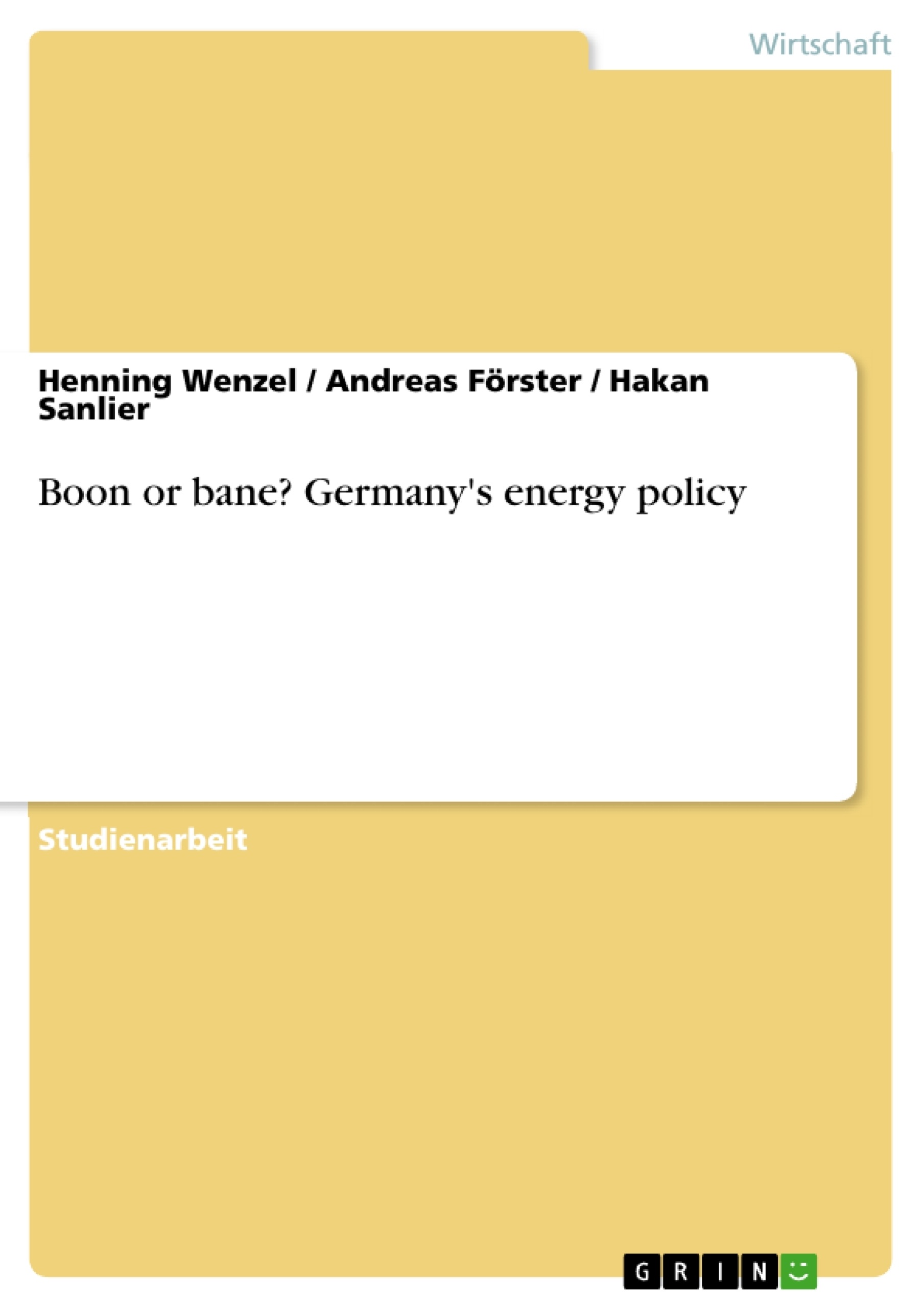The availability of natural resources is decreasing. Because of the current living standards in industrial countries and also the high energy consumption for the production of goods the worldwide natural resources of 1.4 earths are used every year. There has to be a change in the usage of natural resources all over the world. Between the demand for electricity and the offer there must always be a balance. The higher the demand, the more power plants have to produce energy. The costs are entirely dependent on the insert type of power plants.
Germany follows the ambitious target to become the world´s most energy-efficient and environmental friendly economy by generating 80% of its electricity with renewable energy sources in 2050. In 2011 Germany was already able to produce 20% of its energy with renewable energy sources. This is not only good for the environment but also helps to decrease the costs for imports of fossil energy sources.
In order to achieve the ambitious goal and to become a role model for all other countries Germany has to invest in infrastructure dramatically. Further it takes time and coordination efforts to succeed. However an alternative doesn’t seem to be at hand looking at the availability of worldwide resources. Another important side effect of using renewable energy sources are of course the reduction of the so called greenhouse gases and in the same time avoiding the risk of nuclear energy disasters such as in Chernobyl and Fukushima.
Although fulfilling the steps towards Germany’s energy policy seems to be complex and costly at first the long term goal is worthwhile pursuing. It should be in everyone’s interest and in the interest of future generations to have a long term energy policy. Germany can set the rules and play a vital role worldwide in the future. We just have to make sure that the process is fair for all stakeholders.
Table of Contents
Executive Summary
Table of Figures
Table of Abbreviations
1 Introduction
2 Analysis of the energy sector
2.1 Current Energy Situation
2.1.1 Energy Sources
2.1.2 Power generation
2.1.3 Distribution of electricity
2.1.4 Power consumption
2.2 Market structure
2.2.1 Industry structure analysis
2.2.1 Electricity producer
2.2.2 Electricity suppliers
2.2.3 Market regulation
2.3 Formation of prices
2.3.1 European Energy Exchange
2.3.2 Price sharing - Households
2.3.3 Development of prices for households
3 Germanys Energy Policy
3.1 Concept of sustainable energy policy
3.1.1 Economic efficiency
3.1.2 Security of supply
3.1.3 Environmental compatibility
3.2 Targets of German energy policy
3.3 Ways to succeed the “Energiewende”
3.3.1 State interventions
3.3.2 Economic efficiency
3.3.2.1 EEG
3.3.2.2 Governmental subsidies for fossil fuels
3.3.3 Security of supply Economics
3.3.3.1 Grid expansion
3.3.3.2 Grid stability
3.3.3.3 Power plants
3.3.4 Environmental impact
3.4 Status quo Deutscher Energiewende-Index (DEX)
4 Conclusion
Bibliography
ITM Checklist: 360 Degrees Analysis
- Quote paper
- Henning Wenzel (Author), Andreas Förster (Author), Hakan Sanlier (Author), 2013, Boon or bane? Germany's energy policy, Munich, GRIN Verlag, https://www.grin.com/document/315517
-

-

-

-
Upload your own papers! Earn money and win an iPhone X. -

-
Upload your own papers! Earn money and win an iPhone X. -

-
Upload your own papers! Earn money and win an iPhone X. -

-
Upload your own papers! Earn money and win an iPhone X. -

-
Upload your own papers! Earn money and win an iPhone X. -

-
Upload your own papers! Earn money and win an iPhone X. -

-
Upload your own papers! Earn money and win an iPhone X. -

-
Upload your own papers! Earn money and win an iPhone X. -

-
Upload your own papers! Earn money and win an iPhone X. -

-
Upload your own papers! Earn money and win an iPhone X. -

-
Upload your own papers! Earn money and win an iPhone X. -

-
Upload your own papers! Earn money and win an iPhone X. -

-
Upload your own papers! Earn money and win an iPhone X.

